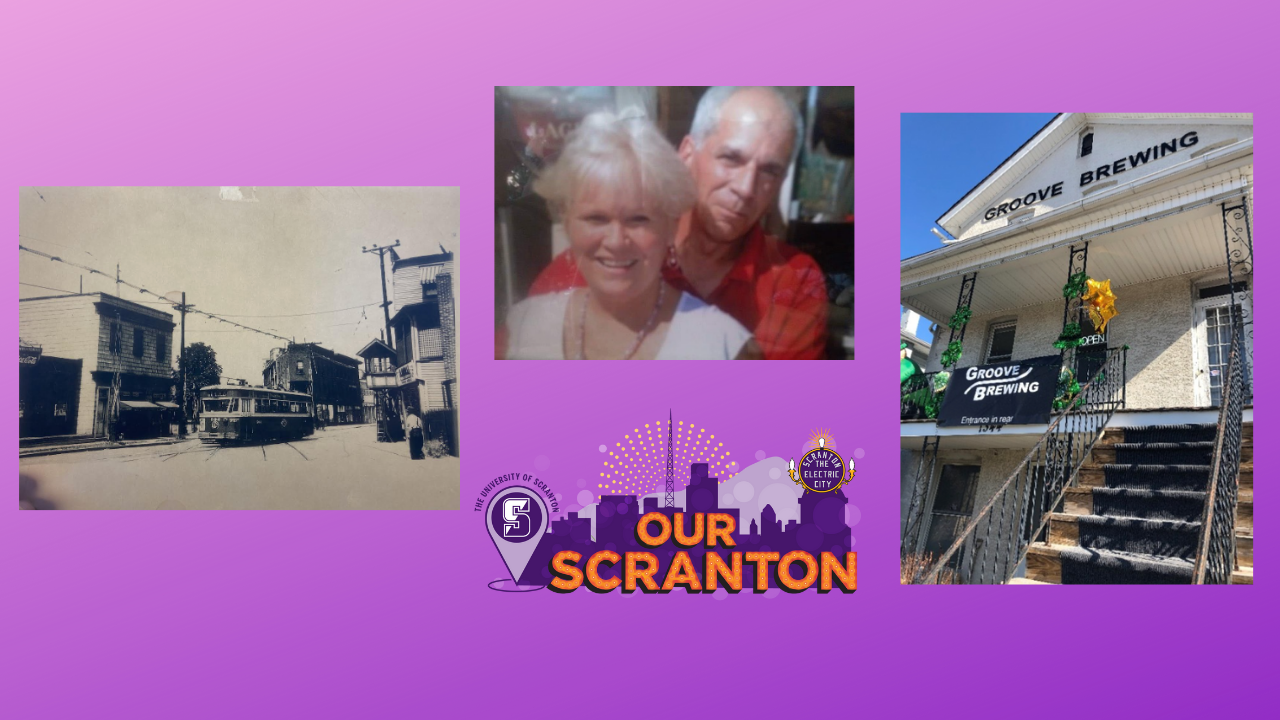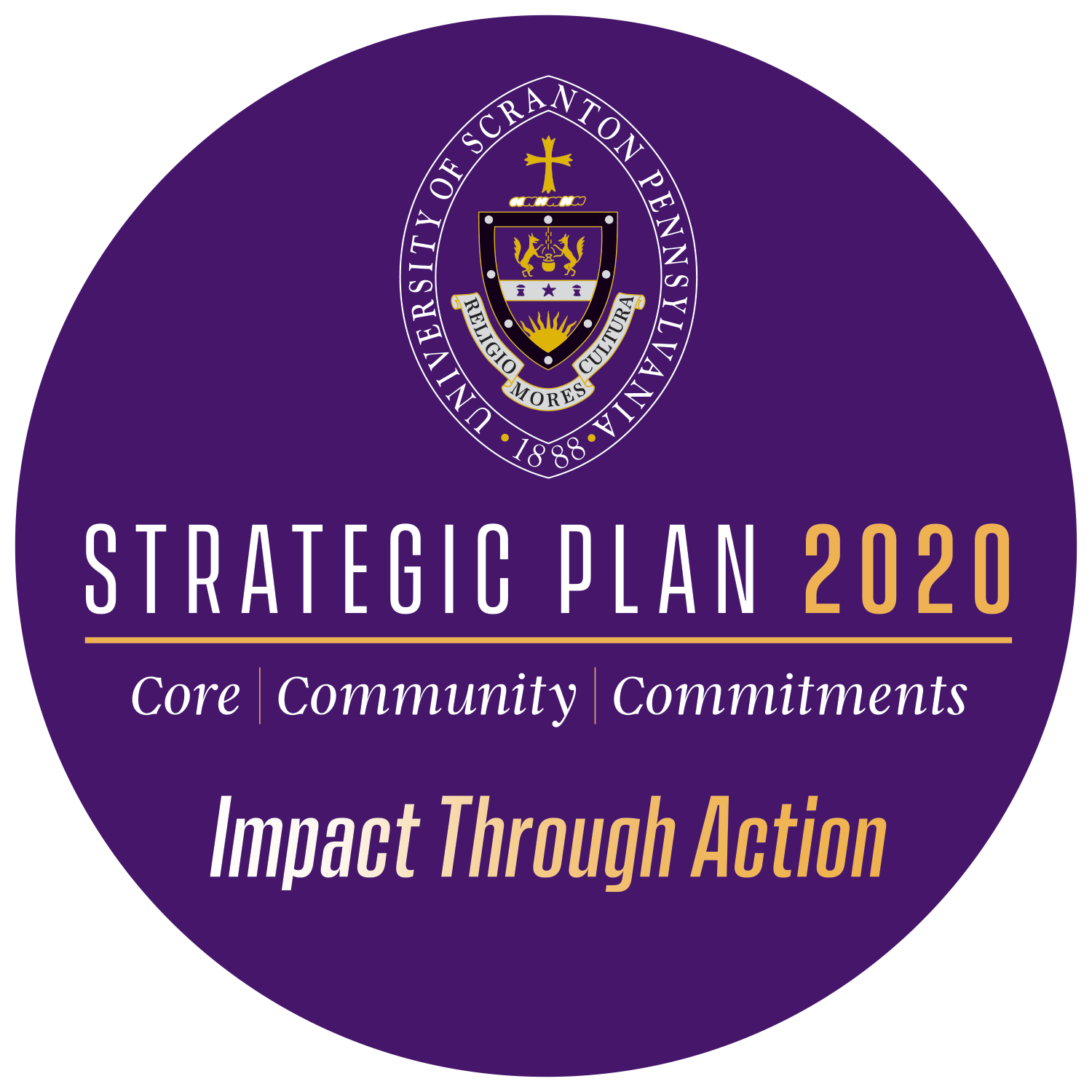Community-Based Learning Projects Share Stories, Foster Connections

During the uncertainty and physical distancing of the 2020-21 academic year, The University of Scranton’s Community-Based Learning (CBL) projects offered opportunities for students to connect with the city of Scranton and our community members in new ways.
Marketing Students Memorialize Stories of Hospice Patients and Families
In fall 2020, students in associate professor of marketing Satya P. Chattopadhyay’s First Year Seminar courses engaged in a community-based learning project partnering with Compassionate Care Hospice to capture the life stories of patients to create biographies for their families and caregivers. For the project, Chattopadhyay’s students were trained as Hospice volunteers and met virtually via Zoom with Cassie Kobeski, volunteer coordinator for Compassionate Care Hospice, and then worked together in small groups with the caregivers and families of the Hospice patients to listen and learn about their patients to create biographies. These biographies captured the life stories of patients and provided a keepsake for families to memorialize the lives of their loved ones.
During this project, Chattopadhyay’s students conducted virtual interviews with family members and caregivers over Zoom and on the phone. These interviews impacted both the families and caregivers, along with University students. Caregiver Jessica Homschek connected with marketing students Allison Buckman from Shrewsbury, New Jersey; Karina Roettger from Brick, New Jersey; and Aidan Bohn from Scranton to share the life and story of her father Salvatore Falvo.
“It was a pleasure working with the students. I told them to cherish life and hold on to memories because [life] is short and can change in a moment with no warning and you never know what’s in store for you,” said Homschek.
In addition to providing perspective and important life lessons, this project also helped students, patients, and caregivers alike to find new connections with people that they may have otherwise never encountered.
“In this challenging time when all of us must work harder to stay connected and present, this biography program has connected individuals whose paths may have never crossed. In addition, our hospice staff looks forward to each new patient’s story shared. When a patient begins our hospice services, we may not always get to know the full breadth of their life experience. The biography program has been a shining light, highlighting the personality and memories sometimes shrouded by the immediate concern of the illness at hand. I am very grateful to The University of Scranton for helping to give a voice to these stories,” said Cassie Kobeski.
Communications Course Shares Experiences of Pine Brook Neighborhood
In another CBL course, students in assistant professor of communications Kimberly Pavlick’s COMM 224: Media Writing course worked with United Neighborhood Centers of NEPA to help support their Pine Brook Neighborhood Revitalization project. This CBL project connected Pavlick’s students with business owners and long-time Pine Brook area residents to create feature stories highlighting the residents’ stories and experiences of Pine Brook. Students curated stories with photos of the Pine Brook residents to help tell the story of this area of Scranton. This project provided students with insights into this area of Scranton right next to downtown that they may have otherwise not encountered. Interviews included the stories of lifelong Pine Brook residents John and Cathy Giumento, Groove Brewing and UNC’s Director of Community Revitalization Christina Manuel.
Occupational Therapy Students Explore Accessibilty in the City
In addition to these community-building projects, CBL projects from this past academic year included other projects that worked to connect University coursework with Scranton community needs and priorities. Occupational therapy faculty specialist Patricia Wisniewski, MS, OTR/L, CPRP worked with two sections of her OT121: Occupational Performance to identify ways to improve accessibility and walkability from an occupational therapy perspective, in collaboration with both the City of Scranton and the Scranton Public Library. These projects provided actionable insights for the community partners and also gave students a new perspective on what navigating spaces may be like for community members with diverse needs and the importance of resolving health and social disparities in the community.
Community-Based Learning a Source of Connection, Learning, and Impact
Looking ahead to what the 2021-22 academic year may bring, Julie Schumacher Cohen, assistant vice president for Community and Government Relations and the Community-Based Learning Board Chair, is hopeful about returning to some pre-pandemic community activities, but confident that regardless of mode, community-based learning will continue to offer special ways for University students to learn about and become a part of the Scranton community.
“This past year truly demonstrated the need for University-community connections and partnerships," she said. "These CBL experiences not only enhanced the coursework for students while helping to meet community-defined needs, but they are also a vehicle for students to truly become a part of our Scranton community.”
To learn more about Community-Based Learning at The University of Scranton click here.







